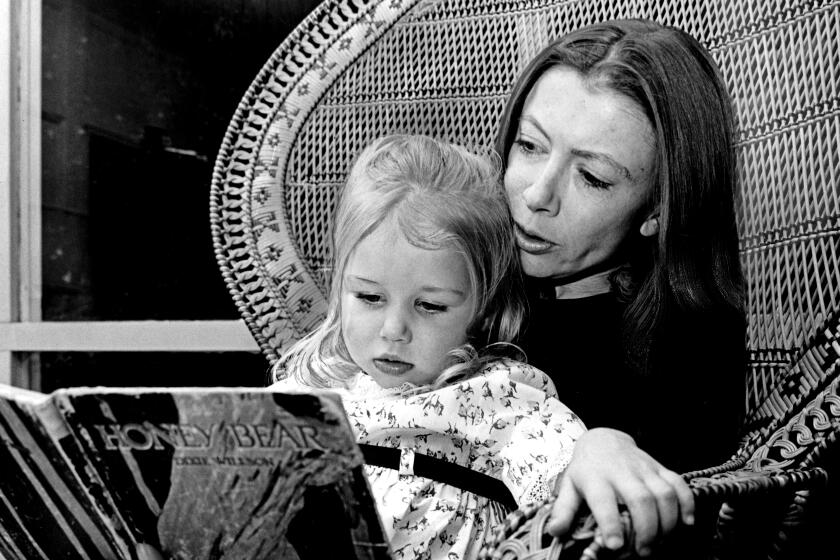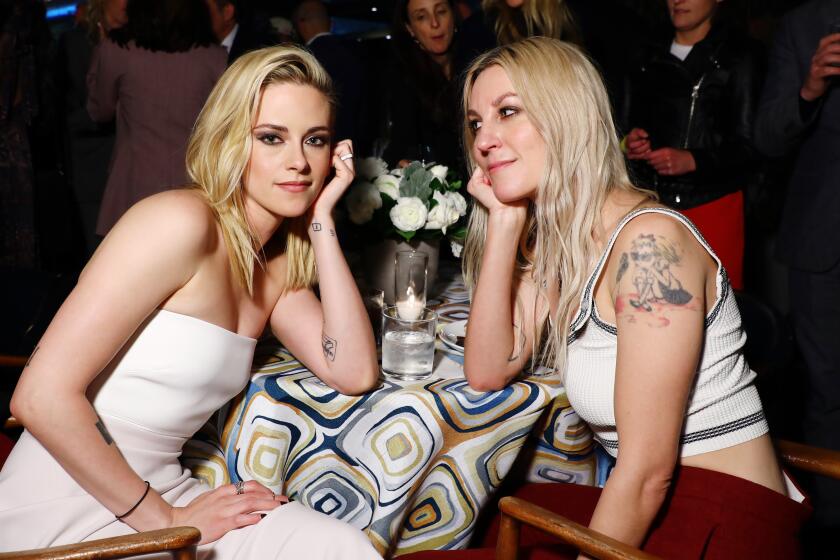‘Columbine,’ by Dave Cullen
- Share via
Forget everything you thought you knew. The girl who professed her faith in God before being gunned down in the library. The Trenchcoat Mafia and the feud between the goths and jocks. The idea that Eric Harris and Dylan Klebold -- the two Columbine High School seniors who, on April 20, 1999, killed 12 of their fellow students and one teacher in what was, at the time, the worst school shooting in the history of the United States -- were disaffected, unpopular, motivated by resentment or revenge. Even the fact that the killings took place on Adolf Hitler’s birthday was a coincidence: The boys had planned to do it a day earlier but hadn’t been able to get the ammunition in time.
All of this, Dave Cullen notes in “Columbine,” his comprehensive account of the tragedy and its aftermath, is the story we’ve been given, the mythic version, the one that (if anything can) aspires to make a kind of sense. It’s a rendering in which the pieces fit together and the terror of the day is mitigated by small moments of redemption, whispers of epiphany and grace.
The problem, however, is that none of it happened -- or more accurately, none of it happened exactly like that. Instead, Cullen points out, the Columbine story was obscured from the outset: first, by the misperceptions of the witnesses, and then, almost immediately, by the misreporting of the media, which at its worst resembled nothing so much as an enormous game of telephone. “The Columbine situation played out slowly,” Cullen writes, “with the cameras rolling. Or at least it appeared that way: the cameras offered the illusion we were witnessing the event. But the cameras arrived too late. . . . We saw fragments. What the cameras showed us was misleading. . . . The data was correct; the conclusions were wrong.”
“Columbine” is an attempt to re-create, methodically, what happened, to re-sort the data and come to conclusions that are correct. It’s a book that hits you like a crime scene photo, a reminder of what journalism at its best is all about. Cullen knows his material from the inside; he covered Columbine, for Salon and Slate primarily, “beginning around noon on the day of the attack.” But if this gives him a certain purchase on the story, his perspective is what resonates.
Cullen’s experience on the ground, after all, is a complicating factor. In “the great media blunders during the initial coverage of this story, where nearly everyone got the central factors wrong,” he acknowledges in an “Author’s Note on Sources,” “I was among the guilty parties.” To remedy that, he spent nine years reporting this book, interviewing hundreds of people, including many principals, poring over police reports and evidence, most chillingly the killers’ diaries and a series of videos, nicknamed “The Basement Tapes” by investigators, that they left as a testament. “Hey, Mom,” Klebold says in the final tape, shot the morning of the massacre. “I gotta go. It’s about a half an hour till Judgment Day. I just wanted to apologize to you guys for any crap this might instigate. Just know I’m going to a better place. I didn’t like life too much, and I know I’ll be happy wherever . . . I go. So I’m gone. Good-bye.”
There’s something freakishly glib about that statement, with its offhand apology, as if this were just a bit of misbehavior, and its sense of life as somehow inconsequential, to be shrugged off without regret. But it’s also gut-wrenchingly sad, the last words of a lost boy, a 17-year-old with no real recognition of what it means. Here we have perhaps the most profound achievement of “Columbine,” to evoke in us an unexpected empathy -- not for what the killers did but for who they were. Their lives, Cullen wants us to remember, are tragic also, and if we are ever to get at the heart of this story, we must make room for them in the calamity.
That’s tricky ground for a writer to navigate, to ask, if not for understanding, for compassion for two boys regarded as monsters. But Cullen makes it work because he insists on framing the killers in human terms. Klebold, he tells us, was suicidal, depressed and easily influenced, a kid who did not fully believe until five days before the attack that he and Harris would go through with it. For him, Harris was the exact wrong person to have befriended: manipulative, cunning, superior, without conscience or remorse.
Among the most disturbing material here is that uncovered by FBI agent Dwayne Fuselier, a hostage negotiator and clinical psychologist whose son attended Columbine. After the shooting, Fuselier profiled the killers and decided Harris fit the profile of a psychopath. In part, this had to do with the grandiosity of his intentions: “The main event,” Cullen writes, “was scripted in three acts, just like a movie. It would kick off with a massive explosion in the commons. More than six hundred students swarmed in at the start of ‘A’ lunch, and two minutes after the bell rang, most of them would be dead. Act I featured two bombs. . . . Each was strung with nails and BBs for shrapnel, lashed to a full gasoline can and a smaller propane tank, and wired to similar bell clocks. . . . The fireball would wipe out most of the lunch crowd and set the school ablaze.”
When, three months after Columbine, Fuselier briefed a major FBI summit on the case, he concluded that Harris “was a budding young psychopath.” A psychiatrist at the conference disputed the assessment. “I don’t think he was a budding young psychopath,” he said. “ . . . I think he was a full-blown psychopath.” Such a diagnosis is supported by Harris’ journal, which opened with the declaration: “I hate the . . . world.” As Fuselier would later put it: “That’s not the jocks. That is an all-pervasive hate.”
Of course, by dwelling on the killers, I don’t mean to disregard their victims, about whom Cullen writes with dignity. That’s no small feat, given that part of his design is to debunk the truisms that have sprung up around the tragedy. Some of his best reporting involves Cassie Bernall, who became famous for affirming her faith in the seconds before Harris murdered her; she was subsequently held up as a martyr by many evangelicals. (“I saw Cassie, and I saw Jesus, hand in hand . . . ,” one pastor told his congregation. “And Cassie kind of winked over at me, like, ‘I’d like to talk, but I’m so much in love.’ Her greatest prayer was to find the right guy. Don’t you think she did?”)
Cullen re-creates the scene in the school library, where Bernall died, tracing the story back and presenting compelling evidence that it was actually another girl -- who was wounded but survived -- who proclaimed that she believed in God. As for Bernall, she died in prayer: “Eric poked his shotgun under the table rim as he came down,” Cullen writes. “He didn’t pause long, or even stoop down far enough for Emily to see his face. She saw the sawed-off gun barrel. The opening was huge. She looked into Cassie’s brown eyes. Cassie was still praying. There was no time for words between them. Eric shot Cassie in the head.”
What’s striking about such a moment is its casual brutality, the sense that this was a situation beyond reason or responsibility. And it was. As Cullen notes, it was just good fortune that Harris didn’t know how to build his bombs, or the body count might have been in the hundreds. The true scope of his intentions was so unbelievable that, almost out of necessity, a divergent mythology arose. “Columbine came to embody everything noxious about adolescence in America,” Cullen writes of the immediate aftermath. “A few students were happy to see some ugly truths about their high school exposed. Most were appalled. The media version was a gross caricature of how they saw it, and of what they thought they had described.”
In part, that’s the fault of the media, which parachuted into Columbine, asked a few questions and then parachuted out. As Cullen argues, it was easy to buy into the narratives already in place: tales of bullying and alienation, of tension between rival cliques. That’s the problem with quick-hit journalism, a style of reporting “Columbine” convincingly refutes. Indeed, if Cullen’s book offers any overarching lesson, it’s that some stories can only be demystified by taking the long view -- especially a story as troublesome and complicated as this.
Ulin is book editor of The Times.
::
Columbine
Dave Cullen
Twelve: 420 pp., $26.99
More to Read
The biggest entertainment stories
Get our big stories about Hollywood, film, television, music, arts, culture and more right in your inbox as soon as they publish.
You may occasionally receive promotional content from the Los Angeles Times.











